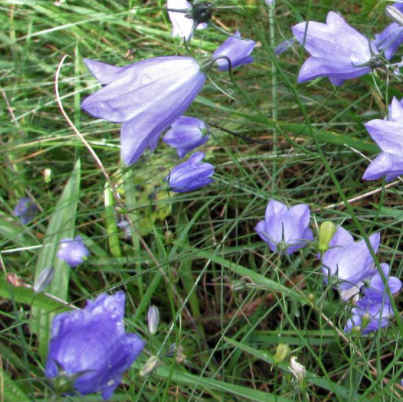Description
Harebell – Campanula rotundifolia
Delicate blue-violet bell-shaped flowers appear at the top of wiry stems spring to fall. It forms a clump 8 inches tall and wide. Harebell emerges in spring as a rosette of round basal leaves that fade as the stems emerge. The tender flowers are tough enough to withstand spring rains, summer storms, mid summer’s heat, and fall’s cooler temperatures. Tolerant of a wide range of conditions, full Sun to light shade.
Native Habitat:
It’s found in rocky, mountain slopes, dry meadows, open woods, shale cliffs, and sandy areas. Harebell has been found locally in Joralemon Woods in the Town of Coeymans and in Oakwood Cemetery in Troy. It attracts hummingbirds.
Cultural History:
It is known as harebell due to an association with witches, and the belief that witches transformed into hares. Native American Navajo used it in witchcraft medicine: it was rubbed on the body to ward off witches. In the old country, it’s known as Witch’s Thimble.
Conservation Status:
Circumboreal (throughout the Northern Hemisphere). Harebell is on the New York State DEC Protected Plant List as being Exploitably Vulnerable – likely to become threatened in the near future throughout all or a significant portion of its range within NY State if causal factors continue unchecked. The taller introduced species Campanula rampunculoides is a common garden thug; it has flowers along one side of a single stem.

